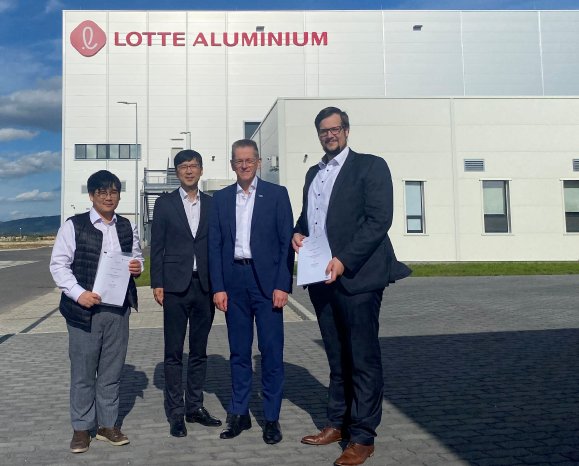- 500 coil storage spaces for smooth material logistics
- Direct access to various process lines in the plant
- Cantilever racking system ensures the material-friendly storage of a vast range of different-size materials
- Optimized process flow thanks to digitalization
The LOTTE group is one of the largest conglomerates in South Korea and employs more than 80,000 people in over 90 business units worldwide. The group's highly diversified product portfolio includes aluminium foils, printed packaging materials, corrugated cardboard boxes, as well as basic chemicals and highly advanced materials such as polymers, monomers, and petrochemical feedstocks.
The group's target is to produce 36,000 tons of cathode foils annually to meet the sharp increase in demand. Aluminium cathode foils are used, for example, in the production of lithium-ion batteries for electric cars. The new high-bay storage system will accommodate coils on paper and steel spools as well as separator racks.
As LOTTE produces very thin-rolled, sensitive coils, SMS was faced in the project planning phase with the challenge of developing a system that was as flexible and material-friendly as possible. An important aspect for LOTTE when awarding the contract was that SMS has a successful reference facility, a fully automated, intelligently controlled high-bay storage system, in the US state of Kentucky, one of many references all over the world.
Applying its decades of experience, SMS worked with the customer to develop an ideal solution tailored to his needs. With the cantilever system (load-carrying beam supported at one end) that is now being implemented, all products can be supplied damage-free for the next stage in the process.
LOTTE is relying on SMS’s digitalization expertise and rounding off its portfolio with the warehouse management software. This software, specially developed over decades, is a core component of the high-bay storage systems and is subject to continual optimization to ensure end-to-end material tracking and user-friendly visualization.
The system is scheduled to go into service at the end of 2024.


